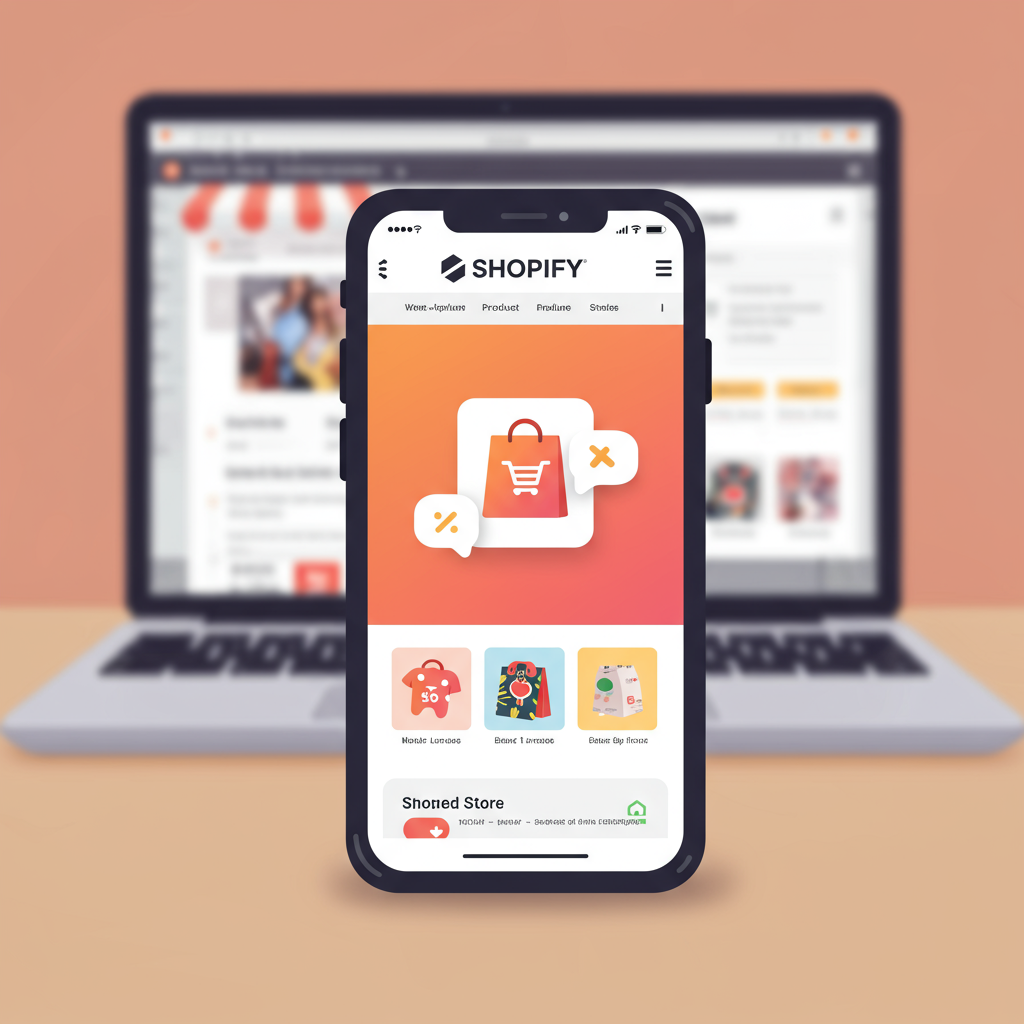In today’s e-commerce landscape, optimizing your Shopify store for mobile isn’t just a good idea – it’s a necessity. Let me explain why.
As a merchant navigating the dynamic world of e-commerce, I’ve come to realize one fundamental truth: the mobile experience is no longer an afterthought; it’s the main event. For your Shopify store, embracing a mobile-first design isn’t just a trend; it’s a strategic imperative.
Think about your own habits. How often do you browse, research, or even make purchases from your smartphone? Chances are, it’s a significant portion of your online activity. Your customers are no different.
Industry statistics consistently show that mobile commerce continues to grow at an exponential rate. A vast majority of online traffic now originates from mobile devices, and this trend shows no signs of slowing down.
This means that if your Shopify store isn’t optimized for mobile, you’re not just missing out on sales; you’re actively frustrating potential customers. They expect a seamless, intuitive experience, regardless of the device they’re using.
Beyond user expectations, there’s Google. For years now, Google has been using mobile-first indexing. This means their algorithms primarily use the mobile version of your content for indexing and ranking.
So, if your mobile site is slow, clunky, or difficult to navigate, it directly impacts your search engine rankings. A poor mobile experience can push your store further down the search results, making it harder for customers to find you.
But what exactly do I mean by ‘mobile-first design’? It’s a philosophy where you design your website for the smallest screen first – typically a smartphone – and then progressively enhance it for larger screens like tablets and desktops.
This is subtly different from traditional ‘responsive design,’ where you might design for desktop first and then adapt it down. With mobile-first, you prioritize the core content and functionality for the most constrained environment.
The primary benefit, in my opinion, is an unparalleled user experience. When you design for mobile first, you’re forced to be concise, clear, and efficient with your layout and content.
This often translates directly into faster loading times. Mobile users are notoriously impatient; every second counts. A mobile-first approach naturally encourages optimization of images, scripts, and overall page weight.
Faster loading times and a streamlined user experience directly correlate with higher conversion rates. When customers can easily find products, add them to their cart, and complete checkout without friction, they’re more likely to buy.
Conversely, a clunky mobile site leads to high bounce rates. If a user lands on your page and it doesn’t load quickly or looks broken, they’ll leave immediately. Mobile-first design helps keep them engaged.
A well-designed, fast, and easy-to-use mobile store also significantly enhances your brand perception. It tells your customers that you care about their experience and are professional.
So, how do you implement this on Shopify? First, choose a mobile-friendly theme. Shopify’s theme store offers many excellent options that are built with responsiveness in mind. Always preview themes on mobile before committing.
Next, optimize your images. Large, uncompressed images are a major culprit for slow loading times. Use Shopify’s built-in image optimization or third-party apps to compress images without sacrificing quality.
Simplify your navigation. On mobile, screen real estate is precious. Use clear, concise menus, often hidden behind a ‘hamburger’ icon, and ensure your product categories are easy to find.
Make your calls to action (CTAs) prominent and easy to tap. Buttons like ‘Add to Cart’ or ‘Buy Now’ should be large enough for a finger, clearly visible, and strategically placed.
The checkout process must be as smooth as possible. Minimize the number of steps, offer guest checkout, and ensure form fields are easy to fill out on a small screen. Shopify’s native checkout is generally well-optimized.
Ensure all interactive elements are touch-friendly. This includes buttons, links, and sliders. There should be enough space around them to prevent accidental taps.
Crucially, test your store on various mobile devices and browsers. What looks good on your iPhone might look different on an Android tablet. Use tools like Google’s Mobile-Friendly Test.
Leverage Shopify’s features. Many apps and functionalities are designed with mobile in mind. Explore options for mobile-specific pop-ups or notifications if they enhance the user experience.
Regularly monitor your store’s speed using tools like Google PageSpeed Insights. Address any recommendations, especially those related to mobile performance.
Don’t forget accessibility. Ensure your mobile design is usable for everyone, including those with disabilities. This includes proper color contrast, readable font sizes, and clear labeling.
By adopting a mobile-first mindset, you’re not just solving current problems; you’re future-proofing your business. The mobile landscape will continue to evolve, and a strong foundation will allow you to adapt more easily.
What are your thoughts on mobile-first design for e-commerce? Have you seen a significant impact on your Shopify store by prioritizing the mobile experience?
In conclusion, for any Shopify merchant, embracing mobile-first design is no longer optional. It’s a critical investment in your store’s future, directly impacting your reach, conversions, and overall success. I truly believe it’s the smartest move you can make right now.






